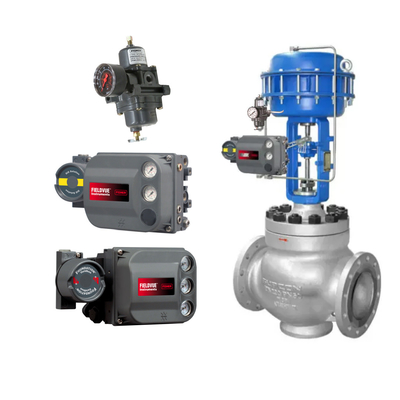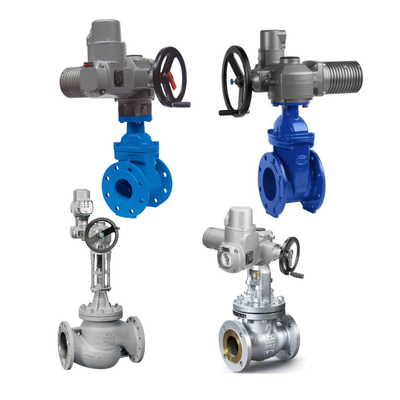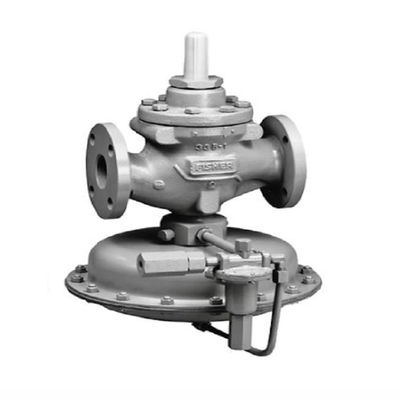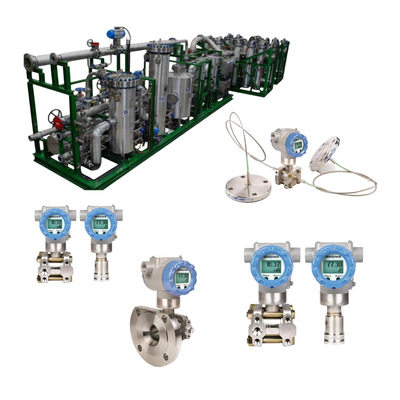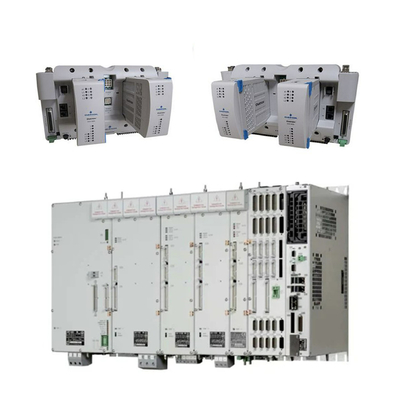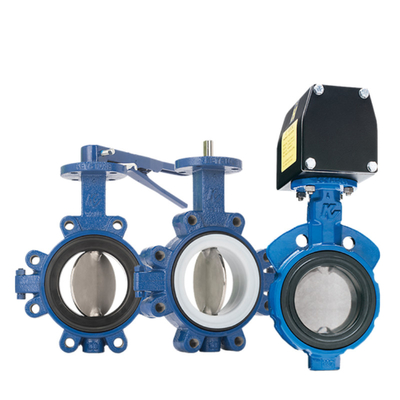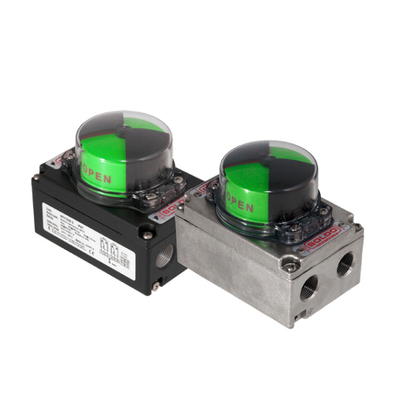1. What are the three main factors to consider when selecting an actuator?
- The output of the actuator must exceed the load of the valve and be appropriately matched.
- When checking standard combinations, consider whether the allowable pressure difference specified for the valve meets process requirements. For high pressure differences, calculate the unbalanced force acting on the valve plug.
- Consider whether the response speed of the actuator meets process operation requirements, especially for electric actuators.

2. What are the characteristics of electric actuators compared to pneumatic actuators, and what are the different output forms?
Electric actuators use electrical power as the drive source, which is simple and convenient, with high thrust, torque, and stiffness. However, they have a complex structure and lower reliability. They are more expensive than pneumatic actuators for medium and small sizes. They are commonly used in applications without a gas supply or where strict explosion-proof and fire-proof requirements are not needed.
Electric actuators have three output forms: angular travel, linear travel, and multi-rotation.
3. Why do angle-travel valves have a larger shut-off pressure differential?
Angle-travel valves have a larger shut-off pressure differential because the resultant force generated by the medium on the valve core or valve plate produces a very small torque on the rotating shaft, enabling it to withstand a larger pressure differential.
Butterfly valves and ball valves are the most common types of angle-travel valves.
4. Which valves require flow direction selection? How should they be selected?
Single-seal regulating valves suchas single-seat valves, high-pressure valves, and single-seal sleeve valves without balancing holes require flow direction selection.
Flow-open and flow-closed types each have their advantages and disadvantages. Flow-open valves operate more stably but have poorer self-cleaning performance and sealing, resulting in shorter service life; flow-closed valves have longer service life, better self-cleaning performance, and sealing, but stability is poor when the valve stem diameter is smaller than the valve core diameter.
Single-seat valves, small-flow valves, and single-seal sleeve valves typically use flow-open type. When severe erosion or self-cleaning requirements exist, flow-closed type can be selected. Two-position quick-opening characteristic control valves use flow-closed type.

5. Besides single-seat, double-seat valves, and sleeve valves, what other valves have regulating functions?
Diaphragm valves, butterfly valves, O-type ball valves (primarily for shutoff), V-type ball valves (high regulation ratio and shear function), and eccentric rotary valves are all valves with regulating functions.
6. Why is valve selection more important than calculation?
Compared to calculation, valve selection is far more important and complex. This is because calculation is merely a simple formula calculation, and its accuracy does not lie in the precision of the formula itself, but in the accuracy of the given process parameters.
Valve selection involves a wide range of considerations, and even minor errors can lead to improper selection, resulting in waste of manpower, materials, and finances, as well as unsatisfactory performance and various operational issues such as reliability, lifespan, and operational quality.
7. Why cannot double-seal valves be used as shut-off valves?
The advantage of the double-seat valve spool is its force-balanced structure, which allows for high pressure differentials. However, its prominent drawback is that the two sealing surfaces cannot maintain good contact simultaneously, resulting in significant leakage.
If it is artificially and forcibly used in shut-off applications, the results will be unsatisfactory. Even with improvements (such as the double-seal sleeve valve), this approach is not advisable.
8. Why does the double-seat valve tend to oscillate at small opening angles?
For a single valve core, when the medium is flow-open type, the valve has good stability; when the medium is flow-closed type, the valve has poor stability. A double-seat valve has two valve cores, with the lower valve core in flow-closed mode and the upper valve core in flow-open mode.
Thus, when operating at small openings, the flow-closed valve core is prone to causing valve vibration, which is why double-seat valves are not suitable for small opening applications.
9. What are the characteristics of a straight-through single-seat control valve? In what applications is it used?
- Low leakage rate, as there is only one valve core, ensuring good sealing. The standard leakage rate is 0.01% KV, and further design can make it suitable for use as a shut-off valve.
- Low allowable pressure difference, as the unbalanced force is large. For a DN100 valve, the pressure difference (△P) is only 120 kPa.
- Low flow capacity. The KV for a DN100 valve is only 120.
It is commonly used in applications where leakage is minimal and the pressure differential is not significant.
10. What are the characteristics of a straight-through double-seat control valve? In what applications is it used?
- High allowable pressure differential, as it can offset many unbalanced forces. The valve's △P for a DN100 valve is 280 kPa.
- High flow capacity. The KV value for a DN100 valve is 160.
- High leakage rate, due to two valve cores that cannot seal simultaneously. The standard leakage rate is 0.1% KV, which is 10 times that of a single-seat valve.
Straight-through double-seat control valves are primarily used in applications with high pressure differentials and less stringent leakage requirements.
11. Why do linear-travel control valves have poor anti-blocking performance, while angular-travel valves have good anti-blocking performance?
In a straight-travel valve, the valve core performs vertical throttling, while the medium flows in and out horizontally. The flow path inside the valve cavity inevitably bends and turns, making the valve's flow path highly complex (resembling an inverted “S" shape). This creates numerous dead zones, providing space for medium sedimentation, which can lead to blockages over time.
In angle-travel valves, the throttling direction is horizontal, with the medium flowing in and out horizontally. This facilitates the removal of impurities and simplifies the flow path, minimizing sedimentation space. Therefore, angle-travel valves have superior anti-blocking performance.
12. When is a valve positioner required?
- Applications with high friction requiring precise positioning. Examples include high-temperature or low-temperature control valves, or valves using flexible graphite packing;
- Applications where slow processes require improved response speed of the control valve. For example, temperature, level, or analytical parameter control systems.
- Applications where increased actuator output force and cutoff force are required. For example, single-seat valves with DN ≥ 25, double-seat valves with DN > 100, or applications where the pressure drop across the valve (△P) exceeds 1 MPa or the inlet pressure (P1) exceeds 10 MPa.
- Applications where the pneumatic open/close mode of the control valve needs to be changed during operation in split-range control systems.
- Applications where the flow characteristic of the control valve needs to be altered.
13. What are the seven steps to determine the valve size?
- Determine the calculated flow rate — Qmax, Qmin
- Determine the calculated pressure drop — select the resistance ratio S based on system characteristics, then determine the calculated pressure drop (when the valve is fully open);
- Calculate the flow coefficient — use appropriate calculation formulas, charts, or software to determine the maximum and minimum KV values;
- Select the KV value — based on the maximum KV value, select the closest KV value in the selected product series to obtain the preliminary valve size;
- Verify the valve opening — ensure that the valve opening is ≤90% when Qmax is reached and ≥10% when Qmin is reached;
- Actual adjustable ratio verification — generally requires R ≥ 10; R actual > R required
- Size determination — if unqualified, re-select the KV value and verify again.
14. Why has the sleeve valve not lived up to expectations when replacing single-seat and double-seat valves?
Cylinder valves, which debuted in the 1960s, were widely used domestically and internationally in the 1970s. In the 1980s, cylinder valves accounted for a significant proportion of petrochemical facilities introduced. At that time, many believed that cylinder valves could replace single-seat and double-seat valves, becoming the second-generation product.
However, this is not the case today. Single-seat valves, double-seat valves, and sleeve valves are all used equally. This is because sleeve valves only improve the throttling form, stability, and maintenance compared to single-seat valves, but their weight, anti-blocking, and leakage performance are consistent with single-seat and double-seat valves. How could they replace single-seat and double-seat valves? Therefore, they can only be used together.
15. Why should hard seals be preferred for shut-off valves?
Shut-off valves require the lowest possible leakage. Soft-seal valves have the lowest leakage and thus the best shut-off performance, but they are not wear-resistant and have poor reliability. From the dual criteria of low leakage and reliable sealing, soft-seal shut-off valves are inferior to hard-seal shut-off valves. For example, fully functional ultra-lightweight control valves, which have seals protected by wear-resistant alloys, offer high reliability and a leakage rate of 10⁻⁷, already meeting the requirements for shut-off valves.
16. Why is the valve stem of a linear-travel regulating valve relatively thin?
This involves a simple mechanical principle: sliding friction is high, while rolling friction is low. In a linear-travel valve, the valve stem moves up and down. If the packing is slightly compressed, it will tightly wrap around the valve stem, causing significant hysteresis. Therefore, the valve stem is designed to be very thin, and low-friction PTFE packing is commonly used to reduce hysteresis. However, this leads to issues such as the valve stem being prone to bending and the packing having a short lifespan.
The best solution to this problem is to use a rotary valve stem, i.e., an angle-travel type control valve. Its valve stem is 2–3 times thicker than that of a linear-travel valve, and it uses graphite packing with a longer service life. The valve stem has good stiffness, the packing has a longer service life, and the friction torque and hysteresis are actually smaller.

 Your message must be between 20-3,000 characters!
Your message must be between 20-3,000 characters! Please check your E-mail!
Please check your E-mail!  Your message must be between 20-3,000 characters!
Your message must be between 20-3,000 characters! Please check your E-mail!
Please check your E-mail! 
